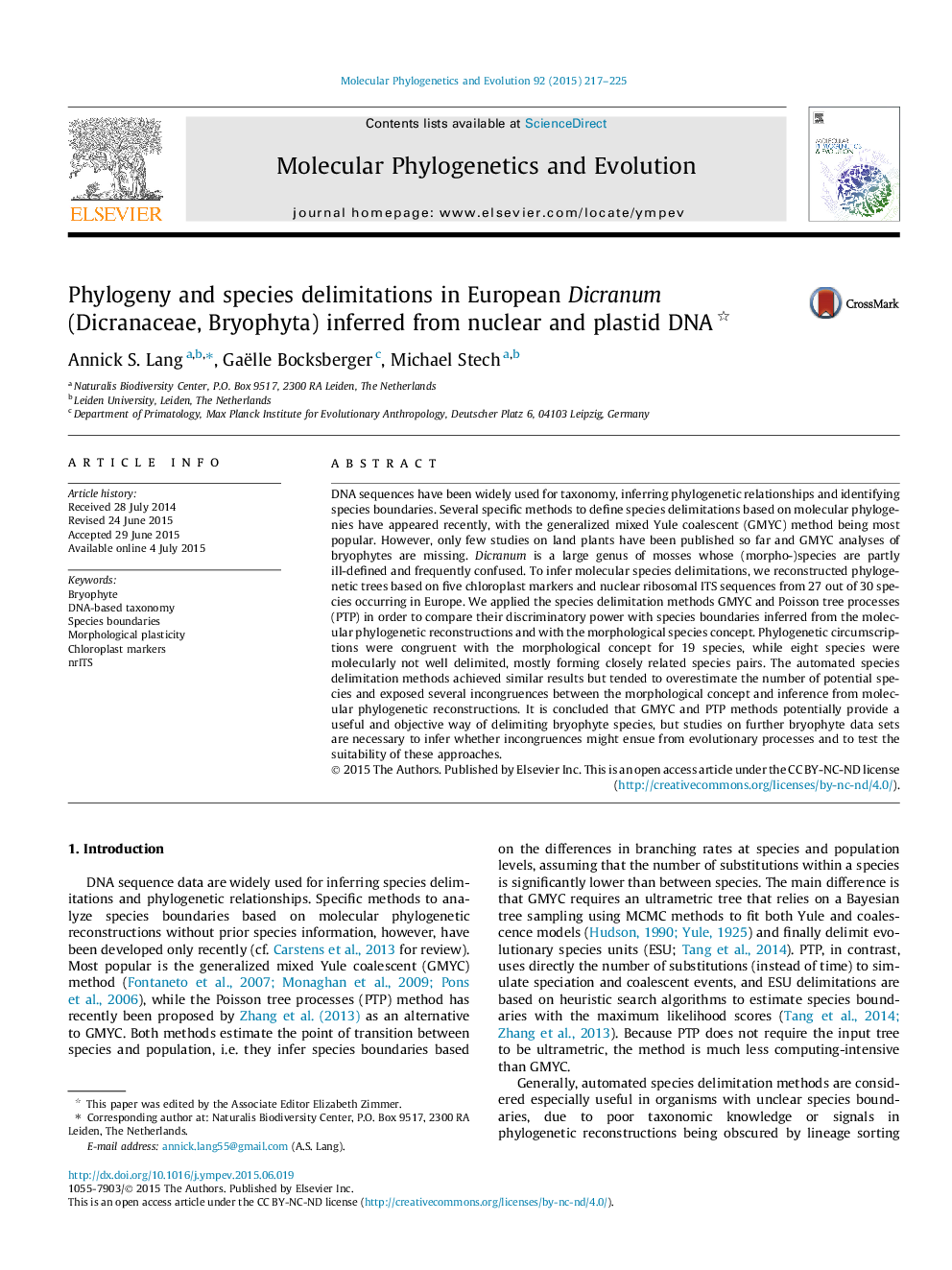| Article ID | Journal | Published Year | Pages | File Type |
|---|---|---|---|---|
| 5918794 | Molecular Phylogenetics and Evolution | 2015 | 9 Pages |
â¢Molecular phylogenetic trees of European Dicranum species were reconstructed.â¢GMYC and PTP species delimitation methods were conducted on the moss genus Dicranum.â¢The molecular species circumscription is generally congruent with the morphological species concept.â¢Automated species delimitation methods tend to overestimate the number of entities within Dicranum.
DNA sequences have been widely used for taxonomy, inferring phylogenetic relationships and identifying species boundaries. Several specific methods to define species delimitations based on molecular phylogenies have appeared recently, with the generalized mixed Yule coalescent (GMYC) method being most popular. However, only few studies on land plants have been published so far and GMYC analyses of bryophytes are missing. Dicranum is a large genus of mosses whose (morpho-)species are partly ill-defined and frequently confused. To infer molecular species delimitations, we reconstructed phylogenetic trees based on five chloroplast markers and nuclear ribosomal ITS sequences from 27 out of 30 species occurring in Europe. We applied the species delimitation methods GMYC and Poisson tree processes (PTP) in order to compare their discriminatory power with species boundaries inferred from the molecular phylogenetic reconstructions and with the morphological species concept. Phylogenetic circumscriptions were congruent with the morphological concept for 19 species, while eight species were molecularly not well delimited, mostly forming closely related species pairs. The automated species delimitation methods achieved similar results but tended to overestimate the number of potential species and exposed several incongruences between the morphological concept and inference from molecular phylogenetic reconstructions. It is concluded that GMYC and PTP methods potentially provide a useful and objective way of delimiting bryophyte species, but studies on further bryophyte data sets are necessary to infer whether incongruences might ensue from evolutionary processes and to test the suitability of these approaches.
Graphical abstractDownload full-size image
